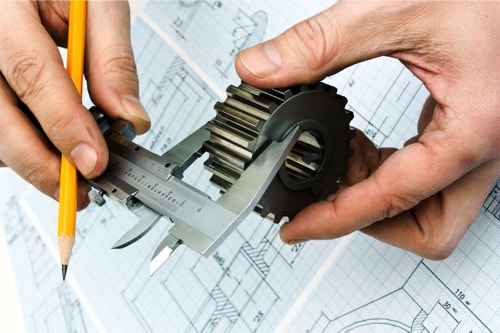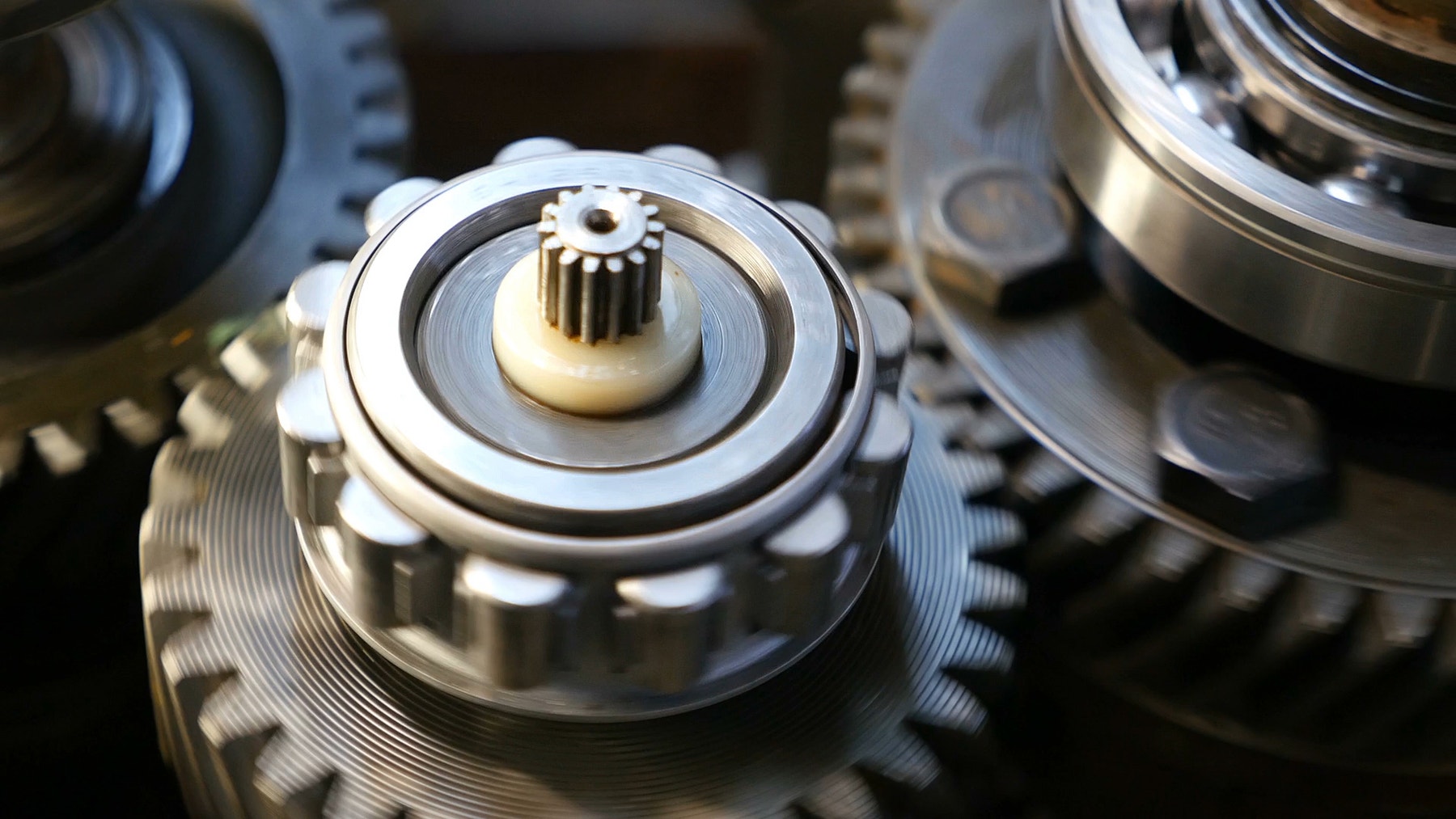Trial and Error
Build a Bevel Bot and try to drive exactly 1 metre.

Lesson plan
1. Prepare
- Read through the pupil material in the EV3 Classroom App.
- Collect information about the processes and procedures that are used by engineers and physicists.
- You’ll need a tape measure and felt tip pens for this lesson.
- If you feel that it’s necessary, plan a lesson using the ‘getting started’ activities in the app. This will help to familiarise your students with LEGO® MINDSTORMS® Education EV3.
2. Engage (10 Min.)
- Watch the unit video and use the ideas in the Ignite a Discussion section below to engage your pupils in a discussion relating to this unit and lesson.
- Divide your class into teams of two pupils.
3. Explore (15 Min.)
- Have each team build the Bevel Bot.
- Allow them time to do a test run to ensure that their model is built and works correctly.
4. Explain (10 Min.)
- Have each team perform the experiments and record their results.
- Make sure that they can create their own testing tables.
- Challenge your pupils to make small adjustments to the program and design of their robot so that it moves the 100 cm more accurately.
5. Elaborate (10 Min.)
- Have your pupils analyse which adjustments resulted in the lowest error.
- Ask each team to briefly summarise the results of their experiments.
- Don’t forget to leave some time for tidying up.
6. Evaluate
- Give feedback on each pupil’s performance.
- To simplify the process, you can use the assessment rubrics that have been provided.
Ignite a Discussion
No machine is perfect. Engineers do their best to make them as precise and accurate as possible, but there will always be some degree of error. Although a machine’s specifications are typically based on calculations and simulations, a physical machine must always be tested in the lab. The machine’s performance can be optimised through testing, iterations and some trial and error.

Watch the unit video and start a discussion about the processes that are used by engineers. Ask relevant questions, like:
- How do engineers work when they’re developing new machines?
- How can they set up experiments to measure a machine’s performance?
- What factors determine the acceptable amount of error and whether the machine’s performance is good enough?
Building Tips
Building Instructions
Using the Model
Place the model on a solid and level surface and mark its starting position. Run the program and mark its finishing position once it has stopped moving. The calculated motor rotations, the actual motor rotations and the calculated distance travelled (in cm) are shown on the Display.
Running the Experiment
As they’re running their experiments, remind your pupils of the following:
- The calculated motor rotations, the actual motor rotations and the calculated distance travelled (in cm) will be shown on the Display.
- Use a tape measure to measure the actual distance travelled.
- Record the experiment number, calculated distance travelled and measured distance travelled in a testing table. Make sure to leave enough space to add more columns for further calculations.
- Perform the experiment at least three times. Use the average values to ensure the most reliable results.
Coding Tips
Program

Differentiation
Simplify this lesson by:
- Helping your pupils to analyse the impact of the speed parameter on the amount of error
Take this lesson to the next level by:
- Explaining the significance of average values (e.g. arithmetic mean versus the median, susceptibility to outliers) that can be used to equalise the measurement errors across a series of experiments
- Encouraging your pupils to improve the design of their robots to further improve their accuracy and precision
Assessment Opportunities
Teacher Observation Checklist
Establish a scale that suits your needs, for example:
- Partially accomplished
- Fully accomplished
- Overachieved
Use the following success criteria to evaluate your pupils’ progress:
- The pupils have identified aspects of the robot’s design or program that caused inaccuracies or imprecisions.
- The pupils have identified external factors that had an impact on the robot’s accuracy and precision.
- The pupils have successfully reduced the error (i.e. the deviation from the expected or desired outcome) by implementing changes to the robot’s design or program.
Self-Assessment
Have each pupil choose the level that they feel best represents their performance.
- Bronze: I’ve performed the experiments but haven’t identified any aspects of the robot’s design or program that caused inaccuracies or imprecisions.
- Silver: With some help, I’ve identified aspects of the robot’s design or program that caused inaccuracies or imprecisions.
- Gold: I’ve identified aspects of the robot’s design or program that caused inaccuracies or imprecisions, and I’ve made changes that have improved its accuracy and precision.
- Platinum: I’ve identified aspects of the robot’s design or program that caused inaccuracies and imprecisions, and I’ve made changes that have improved its accuracy and precision. I’ve also identified external factors that impacted the robot’s accuracy and precision.

Language Arts Extension
To incorporate the development of language arts skills, have your pupils:
- Create a brief report focusing on the results of their experiments and real-world examples of when accuracy and precision are critical
- Create a presentation explaining the results of their experiments and what they’ve learned
Note: This will require additional time.
Career Links
The pupils who enjoyed this lesson might be interested in exploring these career pathways:
- Manufacturing and Engineering (Pre-Engineering)
- Science, Technology, Engineering & Mathematics (Science and Maths)
Teacher Support
The pupils will:
- Learn which aspects of a robot’s design and program are causing inaccuracy and imprecision
LEGO® MINDSTORMS® Education EV3 Core Set
EV3 Classroom App
A tape measure
Felt tip pens
Science Programmes of Study: Key Stage 3 National Curriculum in England
Scientific Attitudes:
- Pay attention to objectivity and concern for accuracy, precision, repeatability and reproducibility
Experimental Skills and Investigations:
- Ask questions and develop a line of enquiry based on observations of the real world, alongside prior knowledge and experience
- Make predictions using scientific knowledge and understanding
- Make and record observations and measurements using a range of methods for different investigations; and evaluate the reliability of methods and suggest possible improvements
Computing at School Progression Pathways
Programming & Development:
- Creates programs that implement algorithms to achieve given goals. (AL)
- Understands the difference between, and appropriately uses if and if, then and else statements. (AL)
- Uses a variable and relational operators within a loop to govern termination. (AL) (GE)
- Understands that programming bridges the gap between algorithmic solutions and computers. (AB)
Information Technology:
- Makes appropriate improvements to solutions based on feedback received, and can comment on the success of the solution. (EV)
- Uses criteria to evaluate the quality of solutions, can identify improvements making some refinements to the solution, and future solutions. (EV)
- Designs criteria to critically evaluate the quality of solutions, uses the criteria to identify improvements and can make appropriate refinements to the solution. (EV)




